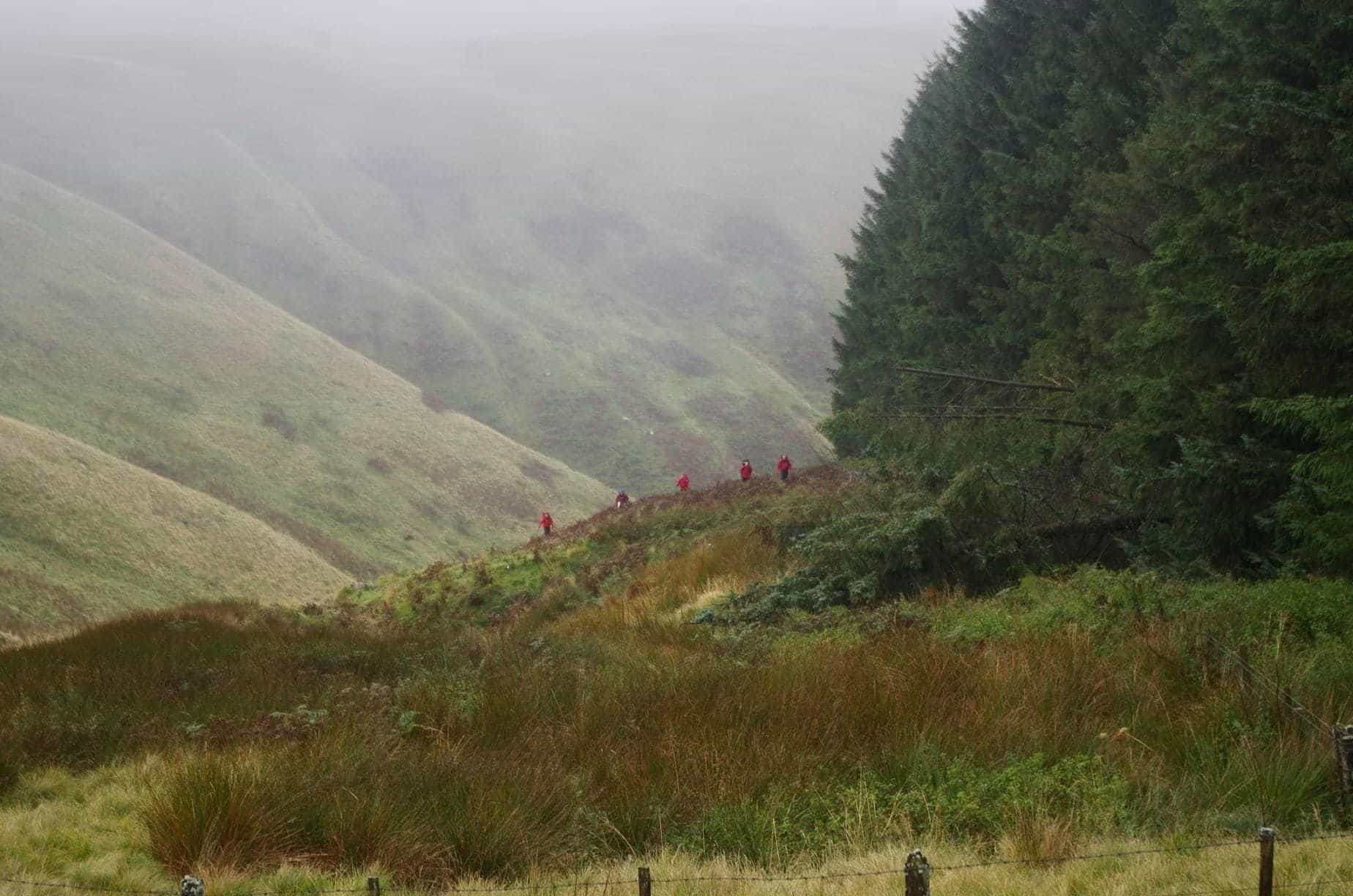The team fills a number of roles and acts for or with other agencies. This results in a diverse range of activities such as supporting efforts with snow storms, patient transport, comms networks, rope rescues, event covers, searching and more. For this section we’d like to tell you more about our core skill of searching. North of Tyne has a large emphasis on search management with command and control activities. Our Mercedes Sprinter is the physical manifestation of this but in essence this role can be done from anywhere given the collaborative communication tools on offer. We search with Northumberland National Park and all resources come together to form a skilled operational block.
Why do we search?
It seems like an obvious question but we get asked this a lot. The romantic vision of Mountain Rescue is searching for people lost in the hills. Yes this still happens but modern systems like gps and mobile phones make it more likely that a lost walker will have some idea where they are. A common need for searching is a request by the police. Missing people with a trail that points to a certain area can lead to mountain rescue being called in to conduct detailed searches of an area. We cannot search in people’s gardens, or knock on doors - that is the role of police. We can flood parks, wooded areas and countryside with team members trained in search techniques. This performs the function of either finding someone/something or moving the search on away from this area. The team is a vital resource to support police operations.

What factors set up a search?
In all likelihood there will have already been an ongoing situation leading up to Mountain Rescue becoming involved. This is dissected by the police and our controllers to produce some working scenarios. Key information is taken into account because research shows that certain situations have likely characteristics. For example, information can be about physical or mental health, age of the missing person, time since last seen, previous history. This data is translated into our search software to form a plan before calling in the team.
Search software
Even before anyone steps foot on the ground, Mountain Rescue is starting to utilise some incredibly powerful search software. SARMAN allows the teams to produce plans for search sectors, routes, points of interest etc and also shows concentric circles highlighting likelihood of detection given the previous research. These maps can be printed from the control vehicle and handed out to search groups. More recently we have started using a mobile version of the search software and this has massively aided the process as it can be updated in real time. Many other tools are available for the search manager such as tracking systems, social media and internet research.
beginning a search
All the information is now gathered and a plan is to be enacted. The team will meet at a defined location known as an RVP. Members are then put into groups and given a briefing by the search manager. Each group will have been tasked to search an area or a route but first they gather all the kit required to go out. Multiple teams, typically of 3 to 4 people, will get to work and the plan is underway.
How do we search?

How a team searches is defined by what task they are given. For example route walking is a fast way of ticking off obvious tracks where a missing person can be found. Even on these you will find team members spread out on each side of the route checking roughly a 40m sweep width. An area is a larger section of land where the team needs to devise a plan for how it is tackled on the ground. For example, a relatively open field with bushes around the outside would probably be done by searching the bushes first and then fanning out to comb the inner area with line searches. There are certain situations where large line searches are required. This is when team members form a closely packed line and scan the ground. This could be to look for evidence or through difficult terrain such as dense vegetation. It is always important for the team to let control know when they started and when they finished.
What happens at the end?
When a route or area is finished it is important for key information to be relayed back to the search manager. This highlights crucial information for the ongoing plan such as coverage, areas to be revisited, terrain, on the ground thoughts/scenarios. All of this feeds into further actions.
Finishing a Search
The end result of searching is pretty binary: the missing person is either found or they are not. However, the result of a detailed search by a large group of search specialists has a huge influence on where the police go from that point. It cannot be underestimated the impact that a large search group has on the family of the missing person - they can be assured that every step is being taken to locate the person in question.
